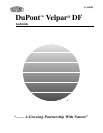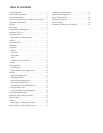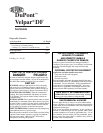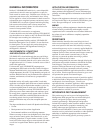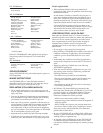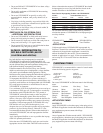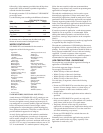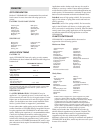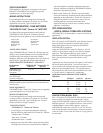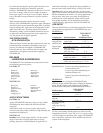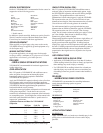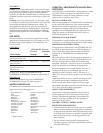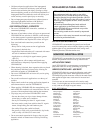
Areas of less than 20 inches annual rainfall - DuPont™
VELPAR® DF may be applied in the fall before the soil freezes
or in the spring after snow cover melts, but before conifer bud
break occurs.
USE RATES
The rates listed below are for broadcast application. For band
application, use proportionately less; for example, use 1/2 of
the broadcast rates when treating a 3-foot band where row
spacing is 6 feet.
Do not use more than one application of VELPAR® DF per
year.
VELPAR® DF (Lb/Acre)
Soils First Year Plantings Established Trees
Coarse Texture
Loamy sand,
sandy loam
(50-85% sand) 1 1/3 1 1/3 - 1 2/3
Medium Texture
Loam, silt loam
silt, clay loam,
sandy clay loam 1 1/3 - 1 2/3 1 2/3 - 2 1/3
Fine Texture
Silty clay loam,
clay loam,
sandy clay,
silty clay, clay 1 2/3 - 2 2 1/3 - 2 2/3
First year plantings - Transplant stock that is 2 years old or
more (1 year old for loblolly pine). Apply VELPAR® DF
only if rainfall has settled the soil around the base and root
systems of the transplants.
Established trees - Trees that have been planted in the
plantation for 1 year or more.
WEEDS CONTROLLED
VELPAR® DF is recommended for the control or
suppression of the following species:
* Partial control
SPRAY EQUIPMENT
VELPAR® DF may be applied by ground equipment or by air.
MIXING INSTRUCTIONS
Select a spray volume that will ensure a thorough and uniform
application.
USE PRECAUTIONS
- CHRISTMAS TREES
• Do not use VELPAR® DF in nurseries, seed beds, or
ornamental plantings.
• Do not add a surfactant in applications over the top of
conifers.
•Weed control results from spring applications depend on
sufficient moisture to activate VELPAR® DF.
• Do not cut treated vegetation for forage or hay nor graze
domestic animals on treated areas for 60 days following
application.
•Poor weed and brush control may result from the following:
–Heavy duff or slash present at the time of application.
–Use on poorly drained sites.
–Applications made when soil is saturated with water and
rain is imminent within 24 hours.
–Applications to soils high in organic matter (greater
than 5%).
• Injury may occur when VELPAR® DF is used on the
following:
–Trees that show poor vigor, insect damage, disease, winter
injury, or other stress conditions.
–Any soil containing less than 1% organic matter.
–Loamy sand or sandy loam with less than 2% organic
matter (except Jeffrey Pine and Ponderosa Pine).
–Foliage after bud break.
–Gravelly or rocky soils, exposed subsoils, clay knobs,
sand, or sandy soil with 85% or more sand.
VELPAR® DF is recommended for control of certain weeds
in pineapple.
APPLICATION TIMING
- USE RATES - MIXING INSTRUCTIONS
Use a sprayer properly calibrated to a constant speed and
rate of delivery.
Mix the proper amount of VELPAR® DF in water. Add a
surfactant at 0.25% by volume of water.
• Intercrop period - Apply VELPAR® DF as a broadcast
spray in 100–400 gal of water per acre at the rate of
1/3 - 2 1/3 lb per acre. For aerial application, use at least
10 gal water per acre.
• Post mulch, preplant - Apply VELPAR® DF as a
broadcast spray in 100–400 gal of water per acre at the
rate of 1/3 - 2 1/3 lb per acre.
• Post plant, before planted cuttings start active growth -
Apply VELPAR® DF as a broadcast spray in 100–400 gal
of water per acre at the rate of 1/3 - 2 1/3 lb per acre.
A post-plant application should be made after planted
cuttings start to grow only when weed growth has escaped
control by other herbicide applications.
PINEAPPLE
Annual bluegrass
Barnyardgrass
Bentgrass
Bromegrass
Catsear* (false dandelion)
Common groundsel
Common ragweed
Crabgrass*
Curly dock*
Dandelion*
Fescue*
Fireweed (willowweed)*
Fleabane
Foxtail
Goldenrod*
Heath aster*
Horseweed*
Orchardgrass*
Oxeye daisy
Pennsylvania smartweed
Ryegrass*
Velvetgrass
Wild carrot*
6



